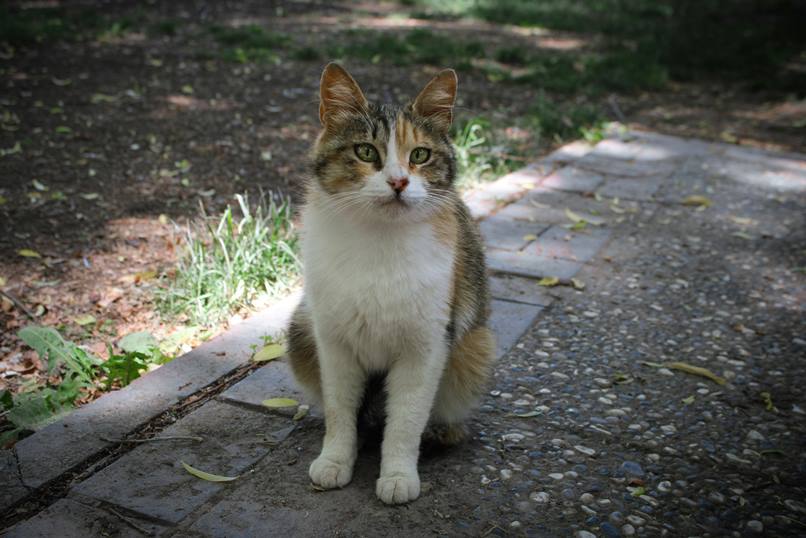In this Article
Wall-mounted cat trees, also known as cat shelves, bridges, or climbing systems, are innovative pieces of feline furniture designed to provide vertical space for cats in homes with limited floor space. These structures typically consist of shelves, perches, ramps, and tunnels attached to walls that allow cats to climb, jump, and explore at varying heights. Unlike traditional cat trees, wall-treks can be customized to fit any room layout, turning unused wall space into a playground that mimics a cat's natural environment.
The benefits of wall runners are many. They encourage exercise, which is critical to preventing obesity and related health problems in indoor cats. By providing elevated vantage points, they satisfy a cat's instinctive need for height, reducing stress and territoriality in multi-cat households. They can also discourage undesirable behaviors such as scratching furniture or jumping on countertops by redirecting energy to appropriate outlets. According to feline behavior experts, providing such enrichment can significantly improve a cat's mental well-being, resulting in fewer behavioral problems.
In this expert article, we'll look at proven strategies for encouraging your cat to use wall tracks. Drawing on veterinary insights, behavioral science, and the real-life experiences of cat owners, we'll cover understanding cat behavior, preparation tips, positive reinforcement techniques, a step-by-step training guide, troubleshooting, and long-term maintenance. Whether you're dealing with a shy kitten or an adventurous adult cat, these methods emphasize patience, consistency, and fun to foster a positive association with the tracks.
Understanding Cat Behavior and the Appeal of Heights
Cats are natural climbers and observers, descended from wild cats such as the African wildcat, which used elevated positions for hunting, safety, and surveillance. In a domestic setting, this translates into a preference for elevated perches where they can monitor their territory without feeling vulnerable. Wall tracks take advantage of this by creating "cat highways" that allow for seamless movement across walls, often incorporating scratching posts, hammocks, or ledges for resting.
However, not all cats embrace new furniture right away. Factors such as age, personality, and past experiences come into play. Kittens and young cats are typically more curious and adaptable, while older or overweight cats may require more gentle encouragement due to mobility limitations. Shy or traumatized cats may find heights intimidating if the tracks feel unstable or inaccessible.
Positive reinforcement is key, as cats respond best to rewards rather than punishment. Punishment, such as yelling or spraying, can induce fear and avoidance, which can make behaviors worse. Instead, focus on what motivates your cat - treats, play, or affection - to build trust. Paying attention to your cat's preferences is important: some cats like to scratch vertically, while others prefer to lie horizontally. Tailor the litter box to their instincts.
Research from organizations such as the American Society for the Prevention of Cruelty to Animals (ASPCA) shows that enriched environments reduce stress hormones in cats, resulting in healthier, happier pets. By understanding these behavioral factors, you can lay the groundwork for successful training.
Preparing Your Wall Tracks for Success
Before you introduce your cat to the tracks, make sure they're set up properly. Start with safety: use sturdy materials such as solid wood or reinforced platforms that can support at least twice your cat's weight. Mount them securely to wall studs with appropriate hardware to prevent wobbling that could scare your cat away.
Placement is very important. Start low - about 12-14 inches from the ground - for easy access, and gradually increase the height to create a progressive path. Place tracks near windows for bird watching or in high-traffic areas to encourage natural exploration. In multi-cat homes, include multiple entry/exit points to avoid bottlenecks and reduce conflicts.
Increase attractiveness by adding items such as sisal scratching surfaces, soft bedding, or dangling toys. Catnip can be a powerful lure; sprinkle it on shelves to attract interest. For aesthetics, choose designs that match your décor, but prioritize functionality: wide platforms for lounging and narrow bridges for agility training.
Test the setup yourself: make sure jumps are reasonable (no more than 18-24 inches apart for most cats) and surfaces are non-slip. If do-it-yourself, follow instructions for floating shelves or modular systems. Professional options from brands like Catastrophic Creations offer pre-designed kits that are both durable and customizable.
Preparation also includes acclimation. Leave the tracks in place for a few days without pressure, allowing your cat to explore at her own pace. This passive introduction builds familiarity and reduces novelty-related hesitation.
Positive Reinforcement Training Basics
Positive Reinforcement (PR) is the cornerstone of modern cat training, rooted in behavioral psychology. It involves immediately rewarding desired actions to increase their frequency, using stimuli such as food, play, or praise that your cat values. Unlike dogs, cats are independent learners, so sessions should be short (5-10 minutes) and voluntary.
Key tools include
- Treats: High-quality options like freeze-dried chicken or tuna flakes work best. Use small portions to avoid overfeeding.
- Clicker Training: A clicker marks the exact moment of good behavior, followed by a reward. This precision helps cats quickly associate actions with results.
- Toys and Play: Interactive wands or laser pointers can guide cats along tracks during play, making training fun.
- Verbal Praise: Soft words like "good kitty" paired with petting strengthen the bond.
Start by "charging" the clicker: click and treat repeatedly until your cat anticipates the reward. Apply PR to furniture use by rewarding any interaction with the tracks - sniffing, pawing, or jumping. Consistency is key; all household members need to follow the same rules to avoid confusion.
Studies show that PR strengthens the human-cat bond and reduces undesirable behaviors such as furniture scratching by redirecting to approved outlets. Avoid negative methods that can undermine trust.
Step-by-step guide to encouraging use
-
Initial Introduction (Days 1-3): Place treats or toys on the lowest shelf. Sit nearby and call to your cat in a calm voice. When they approach, click/praise and reward. Don't force interaction; let their curiosity drive them.
-
Building Confidence (Days 4-7): Once she is comfortable with the base, encourage jumping by dangling a toy over it. Reward each successful jump. For reluctant cats, use a ramp or step stool as a bridge. Incorporate play sessions where chases lead to the tracks.
-
Progressive Exploration (Week 2): Gradually add height. Place rewards on higher levels, using a laser pointer to guide the way. Watch for signs of pleasure, such as purring or kneading, and reinforce liberally.
-
Integration into Routine (Weeks 3+): Make tracks a part of daily life. Feed on elevated platforms or hide treats for "hunts. In multi-cat scenarios, train individually first to avoid competition.
-
Advanced Training: Teach commands like "up" by pairing them with actions. Use PR to discourage alternatives, such as gently redirecting from counters to tracks with rewards.
Patience is key; some cats adjust in days, others in weeks. Track progress in a journal to adjust tactics.
Troubleshooting Common Problems
If your cat ignores the tracks, reevaluate the attraction - add catnip or reposition for better access. If anxious, start even lower or use pheromone diffusers. Overweight cats may need vet-approved exercise first. If aggression occurs in multi-cat households, separate training sessions will help.
Persistent avoidance may indicate health problems; consult a veterinarian. Common pitfalls include inconsistent rewards or unstable setups - correct these immediately.
The Bottom Line
Encouraging your cat to use a cat tree transforms your home into a feline paradise that promotes health and harmony. Through positive reinforcement, thoughtful preparation, and behavioral understanding, you'll foster a lifelong love of these structures. Remember, each cat is unique; adapt the methods to his personality for the best results. In time, your cat will not only use the tracks, but thrive on them, proving that a little encouragement goes a long way in the world of cat care.

